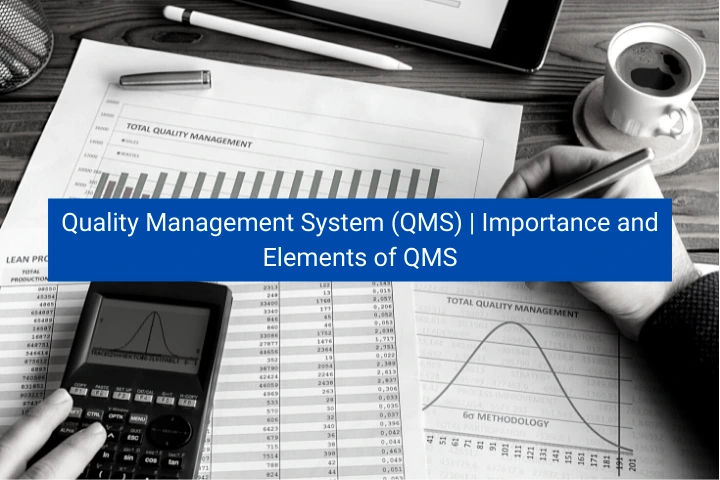A Quality Management System (QMS) enables teams to better deliver on their commitment to continual product development for the benefit of their customers.

What is Quality Management System (QMS)?
A Quality Management System (QMS) is a framework for product and service development that focuses on continual quality improvement. The method starts with clear documentation of each team's roles and procedures, then adds a collaborative way for individuals to deliver on their core competencies—all while regularly reviewing the process for quality.
Ignoring errors does nothing to prevent them from happening again. It also damages organisational culture by educating employees that quality is unimportant. Ignoring minor concerns increases the likelihood of failures in core management areas. Accepting failures also prevent an organisation from imposing quality standards on component vendors and other suppliers.
A quality management system (QMS) provides an organisation with the tools it needs to address issues such as:
- Constant changes in customer needs, supplier components, or product outputs throw communications and planning into disarray.
- A lack of risk knowledge degrades quality, management, and planning.
- Customer usage data, comments, and required modifications are lost, making it impossible for development to include them in roadmaps and planning.
- Rework grows if changes are discovered late in the manufacturing process.
- Errors are caused by human data entry when modifications are made late in the development cycle.
This article gives a high-level overview of the Quality Management System. While QMS software allows firms to manage change, combining it with other tools such as product lifecycle management (PLM), product information management (PIM), and customer relationship management (CRM) offers a distinct advantage to product and service businesses.
Must Read: 15 Effective Methods of Training and Development
Why is QMS Important?
The importance of a quality management system is that while change is inevitable, the impact of change is not. Failures are seen as chances for progress in a QMS framework. The first step in change management oversight is to document practises across functional areas. Organizations that respond to change on a regular basis are able to increase quality control over time.
ISO 9001, the International Organization for Standardization's international specification for quality management systems, starts with international standard documentation so that operational teams can compare expectations to quality objectives and requirements and continuously evaluate them for improvements. In most organisations, mistakes and errors are a sign of a larger process issue. The QMS and ISO standards refocus a team on quality by implementing a technique that can be measured.
Changes and adjustments to nonconformance can be properly documented once they are anticipated in company culture, ensuring that referred goods are consistent in feature and functioning. Ease of rectification also fosters innovation and allows for the incorporation of suggestions for continual development.
This QMS method outlines design controls and risk management to help businesses become more resilient and better able to achieve their quality objectives. Because the collaborative method documents changes and guarantees training along the way, risks produced by-product and workforce changes may be effectively handled. As ideas are implemented and implementers are recognised, individual contributors and managers have additional prospects for promotion.
You may have come to QMS to meet regulatory requirements, but you'll stay for the competitive advantage. Many businesses begin to concentrate on QMS systems because regulatory bodies, senior management, or customer RFPs demand it. For certain businesses, the benefits of the process may be sufficient to justify investing in quality-improvement systems.
For example, leading-edge innovation in medical device development may necessitate the collaboration of a cross-functional team of professionals in technology, medicine, and other sectors. Collaboration on product development can be sped up and regulatory compliance can be simplified by using a QMS framework. When regulatory clearances are required and delays are costly, adhering to the standards might be critical to obtaining timely approvals.
Errors and failures are unavoidable. They become an opportunity for the competition to swoop in and meet customer expectations faster if they are allowed to fester. Management teams begin to recognise the larger competitive advantages as organisations combine their corporate policies and procedures to conform with QMS criteria. The method establishes a framework for how business operations operate and respond to faults and changes at the executive level.
Must Read: Strategic Human Resource Management (SHRM): Features | Advantages
10 Important Elements of Quality Management System (QMS)
Quality control has been practised for over 800 years. Over the years, the concepts that were first applied in mediaeval European guilds have been cemented and improved into what is today recognised as quality management systems. The quality management system (QMS) paradigm has been adapted for use in medical laboratories, yielding a set of a dozen basics that serve as the foundation for quality. The Quality Management System has 10 essential and significant elements...
1. Organization
A systematic quality management system that supports uniform procedures must be implemented in the laboratory. In a quality-driven culture, the management team and quality unit, as well as procedures for monitoring ongoing quality, are critical.
2. Personnel
A laboratory's most valuable asset is its knowledgeable employees. The quality management system includes components such as training, motivation, and engagement.
3. Equipment
Every piece of laboratory equipment must be kept in good working order to ensure that it operates safely.
4. Purchasing and Inventory
To ensure that raw materials and other supplies are constantly of good quality, proper supply chain management is essential. Inventory processes should ensure that materials and supplies are kept in a secure manner.
5. Process Control
Process control includes testing quality assurance processes such as:
- Gathering
- Processing
- Method Validation
- Process Validation
The design control software can substantially enhance internal efficiencies if you're having trouble with process control.
6. Information Management
The laboratory generates a variety of data, such as QC test results, maintenance reports, and other information. This data must be maintained in a way that guarantees that all information is correct, secure, and confidential and that only those with the appropriate privileges, such as lab managers and leadership, have access to it.
Must Read: 7 Strong Advantages of Using a Document Management System (DMS)
7. Documents and Records
Information management and document management are very similar concepts, and there is a lot of overlap between the two. Standard operating procedures (SOPs) are one of the most important lab documents since they establish a standard for each process. Documents must be accessible at the point of use, be well-maintained, accurate, and safe. Any growth-oriented life sciences organization should make finding the correct document management software a top priority.
8. Occurrence Management
Any error or non-conformance is referred to as an "occurrence." A quality management system (QMS) can assist you in detecting these issues and facilitating investigations to determine the root cause and prevent a recurrence.
9. Assessment
Comparing laboratory performance to internal quality standards or external data sets, such as industry benchmarks, is part of the assessment process. The operations of lab or QC managers, internal auditors, or external inspectors are all included in assessments.
10. Process Improvement
A quality management system should help laboratories improve their procedures on a constant basis. QC and CAPA are two QMS components that can help with improvement (occurrence management). To design and activate big improvements to internal processes, we propose investing in training management software.
For Human Resource, Payroll and many more HR Services, visit our website https://lingueeglobal.com/



